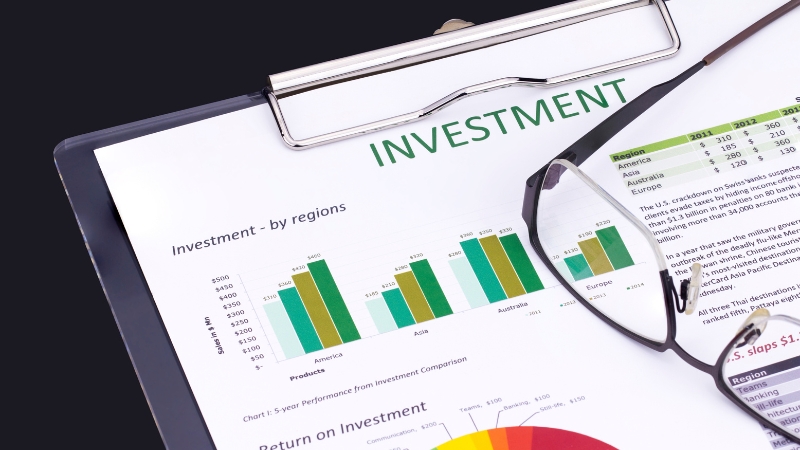How to manage investment risk is one of the most important aspects every investor needs to master. In the ever-changing world of finance, understanding how to effectively mitigate risk can mean the difference between success and failure.
Investors often face uncertainty, especially when markets are volatile. How to manage investment risk becomes even more vital during periods of market instability, as unexpected events can lead to significant losses. By having a risk management plan in place, investors can navigate these challenging times with more confidence and maintain their financial goals.
Furthermore, the ability to control and mitigate risks can increase the likelihood of achieving consistent returns. This is why understanding how to manage investment risk is not just about minimizing potential losses but also about positioning yourself for sustainable growth.
Understanding Investment Risk

Investment risk refers to the potential of losing money on an investment. It’s inherent in every financial activity, from buying stocks to starting a business.
While risk cannot be completely avoided, it can be controlled and mitigated. The key to managing investment risk is first understanding the various types of risk that exist, such as market risk, credit risk, and liquidity risk.
1. Market Risk
Market risk involves the possibility of an investor suffering losses due to changes in the financial markets. Factors like inflation, interest rates, and political instability can all contribute to market volatility.
One of the most effective ways to handle market risk is through diversification. By spreading investments across different asset classes, you reduce your exposure to the potential downturn of any one market.
2. Credit Risk
Credit risk arises when there’s a chance that a borrower might default on a loan or bond. This is particularly relevant for those who invest in corporate bonds or fixed-income securities.
To manage credit risk, investors should evaluate the creditworthiness of the institutions or companies they are investing in and consider using credit ratings as a guide.
3. Liquidity Risk
Liquidity risk refers to the inability to sell an asset without significantly affecting its price. In times of financial crisis, liquidity can dry up quickly, making it difficult to sell investments at their fair market value.
To manage liquidity risk, it’s wise to maintain a portion of your portfolio in highly liquid assets, such as cash or government bonds.
Starting with Stocks: Managing Your Risk (How to manage investment risk)
When you’re new to the world of investing, understanding how to start investing in stocks is just as important as knowing how to manage investment risk.
Stocks can offer substantial returns, but they also come with higher risks compared to other asset classes. For beginner investors, it’s essential to have a solid strategy in place to mitigate these risks while learning the market dynamics.
A great starting point is exploring this guide on how to start investing in stocks, which provides practical steps to navigate the stock market while managing your risk exposure efficiently.
Key Strategies for Managing Investment Risk
1. Diversification
Diversification is one of the most effective ways to reduce overall risk. By spreading investments across various sectors, industries, or asset classes, you minimize the impact of poor performance in any single investment.
Stocks, bonds, real estate, and commodities all react differently to market changes, offering a balanced portfolio.
2. Risk Tolerance Assessment (How to manage investment risk)
Before making any investment, it’s important to assess your own risk tolerance. This refers to how much risk you are willing to take based on your financial situation and investment goals.
Conservative investors may prefer lower-risk options such as bonds or dividend-paying stocks, while more aggressive investors may be willing to take on higher risks for the potential of greater rewards.
3. Regular Portfolio Review
The financial market is constantly evolving, and so should your investment strategy. Conducting regular portfolio reviews ensures that your investments remain aligned with your goals and risk tolerance. Rebalancing your portfolio periodically can help you adjust your risk levels as market conditions change.
Long-term Investment Strategies
Managing investment risk isn’t just about protecting against short-term losses; it’s also about ensuring long-term success. Investors should focus on long-term strategies that help weather short-term volatility while positioning for steady growth over time.
1. Dollar-Cost Averaging
Dollar-cost averaging is a strategy where investors regularly contribute a fixed amount of money, regardless of market conditions. This approach reduces the risk of making large investments during unfavorable market conditions and takes advantage of lower prices during market dips.
2. Investment in Index Funds (How to manage investment risk)
Index funds are designed to track the performance of a market index, such as the S&P 500. They offer a simple, cost-effective way to diversify across a broad range of companies, reducing individual stock risk while benefiting from the overall growth of the market.
Professional Resources for Managing Investment Risk
For those looking to deepen their understanding of how to manage investment risk, accessing professional resources is key to building robust strategies. Institutions like the CFA Institute offer a wealth of information, tools, and educational materials to help investors refine their risk management skills.
By leveraging such resources, investors can stay informed about the latest industry standards and best practices for mitigating risk, ensuring more informed decision-making in their investment strategies.
FAQ: How to Manage Investment Risk
1. What is investment risk?
Investment risk refers to the possibility of losing some or all of the money invested due to various factors like market volatility, economic changes, or poor performance of individual investments.
2. Why is managing investment risk important?
Managing investment risk is crucial because it helps minimize potential losses and ensures that your investment strategy aligns with your financial goals and risk tolerance, leading to more sustainable, long-term returns.
3. What are the main types of investment risk?
The main types of investment risk include market risk, credit risk, liquidity risk, interest rate risk, and inflation risk. Each of these can affect different asset classes in various ways.
4. How can diversification help manage investment risk?
Diversification helps manage investment risk by spreading your investments across different asset classes, sectors, or regions. This reduces the impact of poor performance in any single investment on your overall portfolio.
5. What is risk tolerance, and why is it important?
Risk tolerance refers to the amount of risk you are willing and able to take on based on your financial situation and investment goals. Understanding your risk tolerance is important because it helps guide your investment choices and ensures you are comfortable with the level of risk in your portfolio.
Conclusion: How to manage investment risk
Effectively learning how to manage investment risk is a critical skill for both new and seasoned investors. While risk is an inherent part of any investment, the strategies outlined throughout this article, such as diversification, regular portfolio reviews, and assessing your personal risk tolerance, can greatly reduce the potential for significant losses.
Moreover, managing investment risk requires a proactive approach. As markets fluctuate and personal circumstances change, regularly revisiting your investment strategy is essential to ensure your portfolio remains balanced and aligned with your long-term objectives.
In conclusion, while the investment world may seem complex, focusing on managing risk can bring greater confidence and security in your financial decisions. By understanding the risks involved and implementing the strategies discussed, you position yourself for sustainable success, even in volatile markets.


